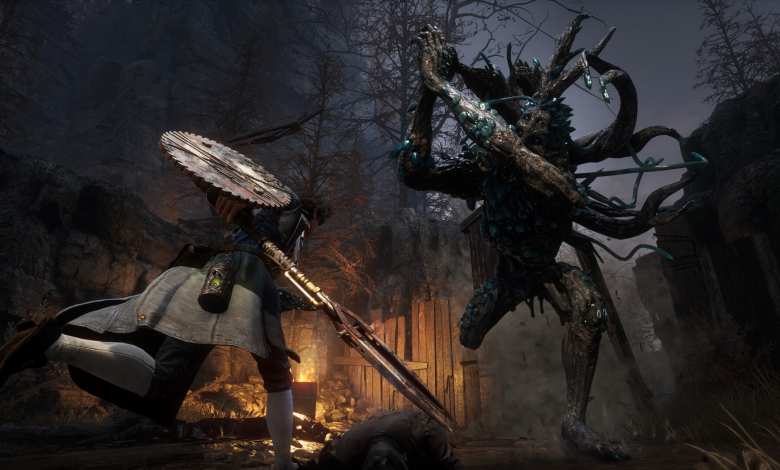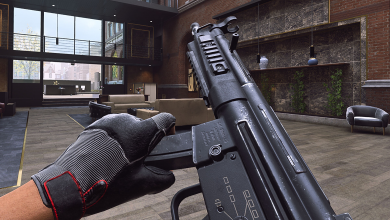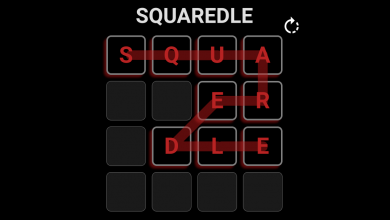Lies of P Review Video Game in 2024

Welcome to a world steeped in deception and dark appeal, where the hazy borders between human decency and horrific evil become clearly visible. The action role-playing game “Lies of P” invites players into a curious environment inspired by the legendary story of Pinocchio. But this isn’t the wood-carved lad from children’s tales; it’s a reworking for the ages, set in a dystopian metropolis pulsing with mechanical life and the shadows of a once-gleaming civilization. We’re going to unravel the threads that govern us, plunge into a story that twists more sharply than a marionette’s puppeteering wires, and discover if falsehoods may genuinely pave the way to our humanity. Prepare for a complicated voyage of treachery, warfare, and survival via the creative genius of “Lies of P”.
At the heart of “Lies of P” is a distinct selling point that combines the nostalgic threads of a childhood story with the sinister undercurrents of an adult nightmare. This game turns Pinocchio’s innocent story into a fascinating narrative set against a neo-noir backdrop, where steampunk aesthetics meet gameplay that requires moral judgments and shrewd tactics. This game’s fascination stems from its ability to repurpose a familiar tale into an experience rich in suspense, complexity, and significant decisions that call into question the very nature of what it means to be human.
In today’s gaming scene, a strong story is more than simply a feature; it’s a vital thread that weaves gameplay, style, and player experience into a seamless, engaging tapestry. The importance of a fascinating plot cannot be emphasized; it is a key component that captivates players, enticing them to walk into another’s shoes, interact with the characters, and feel the emotional depth that the virtual world provides. “Lies of P” epitomizes this growth by providing a narrative that is more than just a background for action—it is the game’s pulse, ensuring that every option is meaningful and every action has consequences. As players go through its convoluted storylines, they are embodying a narrative and living an epic, rather than just playing a game.
“Lies of P” Game’s Setting and Dystopian City Lore
The cityscape in “Lies of P” is as much a character as Pinocchio, a huge dystopian metropolis known as Krat. Its gloomy passageways and mist-shrouded streets give life to a nightmarish image of Belle Époque Europe, rife with corruption and ruin. While gorgeous in its architectural wonders, this mechanical metropolis is a dangerous maze that offers a narrative of stark cultural differences and the never-ending chase of perfection in a flawed world. Krat is an architectural vision of gears and steam, metal skyscrapers, and the brilliance of amber lights, demonstrating the sheer strength of a civilization obsessed with advancement at any costs. Its residents, a mix of humans and automata, negotiate the intricacies of a society where the distinction between real flesh and finely built equipment is blurred. Krat’s atmosphere is filled with intrigue and the echo of footfall on cobblestones—each turn leads to a new mystery, a new obstacle to solve.
Visual and Audio Artistry
The graphic design of “Lies of P” smoothly combines gothic themes with a steampunk feel to create a visually appealing environment. The game’s atmosphere is filled with dark, gloomy architecture and robotic structures that induce both awe and anxiety. This visual pattern not only underlines the narrative’s themes of deceit and moral uncertainty, but it also creates a gorgeous background for exploration. Diligently produced textures, evocative lighting, and meticulous details immerse players in a metropolis that seems both lived-in and otherworldly, heightening the feeling of wonder and the unknown. The design decisions made here are intentional, welcoming the user into an experience that is as much about visual engagement as it is interactive narrative.
How the Game Draws Inspiration from Pinocchio
“Lies of P” leans heavily on the traditional tale of Pinocchio, constructing a complicated story in which choices and deceit play major roles. The game turns the narrative of a wooden puppet aspiring to be a real boy into a dark, complicated journey of self-discovery and the repercussions of ambition. As in the original story, themes of truth, lying, and morality pervade the gameplay, requiring players to navigate the muddy seas of their character’s decisions. Pinocchio’s journey for humanity is figuratively reflected by the protagonist’s encounters with the world’s inhabitants and the decisions made when confronted with moral quandaries. The mythical nose, which grows with each lie committed, is skillfully recreated as a representation of the character’s moral compass, influencing the storyline and changing the player’s course through Krat. This tribute to the Italian classic is further emphasized by the layout of the in-game characters and location, as well as the ongoing interaction between truth and untruth and the quest for authenticity in an artifice-filled world.
Protagonist’s Design and Characteristics
The protagonist of “Lies of P” is a reworking of Pinocchio, lies of p release date however it differs significantly from the original image. The character is designed with mechanical precision and human-like intricacy, reflecting the game’s dark and adult themes. The use of a mechanical puppet captures the contradiction between artificiality and real human feeling, echoing the protagonist’s emotional dilemma. The character’s design is detailed and gothic, with a steampunk look that combines the industrial age with magical realism. This design decision is meaningful since it corresponds to the game’s underlying theme about the automation of society and the loss of innocence. Visually, the character exudes strength and complexity, dragging players into a journey that is as much about self-discovery as it is about exploration and fighting. As a result, the creators created a character that not only acts as an story vessel, but also represents the game’s thematic issues and philosophical dilemmas.
In contrast to the traditional Pinocchio character.
In sharp contrast to the classic version of Pinocchio—the wooden puppet who wishes to become a real boy—the protagonist in “Lies of P” is a grim symbol of the repercussions of deception. Whereas the original Pinocchio is innocent and prone to infantile lies, the reinvented character lives in a morally murky world, struggling with facts that have far-reaching consequences. The classic nose that grows with each lie is replaced with a more subtle portrayal of dishonesty’s repercussions, which appear in the game’s mechanics and the protagonist’s relationships with others. This new Pinocchio is more than just a simple marionette; he is a complex creature caught in a web of lies, and his decisions shape not only his fate but the world around him—a significant departure from Carlo Collodi’s character, reflecting a nuanced understanding of humanity’s darker facets.
Gameplay mechanics The Combat System
“Lies of P” offers a complex and strategic fighting system, stressing the value of skill and time. To defend themselves against opposing assaults, players must use a mix of melee weapons, ranged strikes, and parries. The protagonist’s distinct talents allow for a variety of fighting strategies, accommodating a player’s desire for aggressive or elusive confrontations. The game’s complexity increases as the player progresses, lies of p weapons requiring a deeper grasp of battle mechanics and adversary characteristics while rewarding expertise and tactical variety. Whether via conflict or cleverness, players are challenged to change their tactics to live in the game’s harsh universe.
Soundtrack and Sound Design
The aural environment of “Lies of P” is expertly crafted to complement the game’s visual brilliance, engulfing players in a soundtrack that captures the spirit of its dark, immersive universe. The music, with its haunting melodies, supports the storyline’s suspense and drama while elevating moments of discovery and meditation. The sound effects are expertly constructed, from the echoes of groaning equipment to the nuances of footfall on cobblestone, each adding depth and authenticity to the gaming experience. As players move through the shadowy streets, the interplay of music and ambient noises acts as an unseen narrator, heightening the emotional effect and magnifying the tension inherent in each scenario.
Role-playing Elements and Character Progression
The RPG elements of “Lies of P” are thoroughly woven into the story, allowing players to control the protagonist’s path via a variety of choices and branching conversations. Character evolution is inextricably linked to the choices made, which not only influence the story’s ending but also the protagonist’s powers and traits. Skill trees enable players to customize their characters’ fighting and stealth skills based on their style and the challenges they confront. Furthermore, the protagonist’s morality is a dynamic system that changes with each choice of truth or lying, opening or shutting plot paths and modifying interactions with other characters. These levels of advancement offer a rich, individualized experience tailored to each player’s moral compass and playing style.
Theme of Deception
The Role of Lies in the Game’s Story and Play
In “Lies of P,” dishonesty is more than just a narrative device; it is a major gameplay component that has a significant impact on the protagonist’s journey. As players traverse a treacherous environment, the falsehoods they make may influence in-game events and character destinies. This mechanism creates a moral conundrum by examining the ethical implications of each untruth and its possible repercussions. Deception has the potential to open doors and form alliances, but it also runs the danger of unintended consequences. The strategic use of falsehoods may affect the game environment, forcing players to think about the long-term consequences of their decisions beyond immediate advantages. The use of lying as a tactic contributes to a greater contemplation on truth and consequences in a complicated moral environment.
Insight into how the theme reflects broader human experiences
The interweaving of deceit in “Lies of P” reflects the multidimensional character of truth in human experience, where the distinction between good and evil is sometimes obscured by situation and viewpoint. Individuals, like our protagonist, must traverse a complicated social web in which falsehoods may be used as a shield, weapon, or survival strategy. The game’s reflection on the ramifications of deception mirrors the real-world implications that each decision has, influencing our relationships and social position. By confronting players with the consequences of their dishonest behavior, the game becomes a compelling analogy for the ethical quandaries we face in life, where each option has a tremendous influence on our story and the lives of others around us.
Conclusion
“Lies of P” exemplifies the power of atmospheric storytelling in video games, as every visual and audio aspect comes together to form a hauntingly beautiful tapestry. The game’s sophisticated design decisions and superb workmanship provide an engaging experience that entices players to explore its mysterious universe. Its narrative intricacy is only surpassed by the realism of its steampunk setting, which engages players not just with puzzles and obstacles, but also with philosophical quandaries that remain long after the game is over.
This game reminds us that the core of great storytelling is not limited to the pages of a book or the scenes of a film, but can be just as powerful when given via the interactive medium of video games. It challenges preconceptions, raises provocative questions, and provides an escape into a world that is both mysterious and captivating. Finally, “Lies of P” is more than just a game; it is an experience that clearly depicts the emerging art form of video game storytelling, establishing a high standard for future releases in the category.
The popularity of “Lies of P” stems not just from its immersive gameplay, but also from its capacity to elicit powerful emotional responses—a feat accomplished via a symphony of artistic design, intriguing storytelling, and dynamic soundtracks. As players battle with themes of humanity, technology, and deception, they discover that they are on a never-ending quest for the truth in an illusion-filled world.




